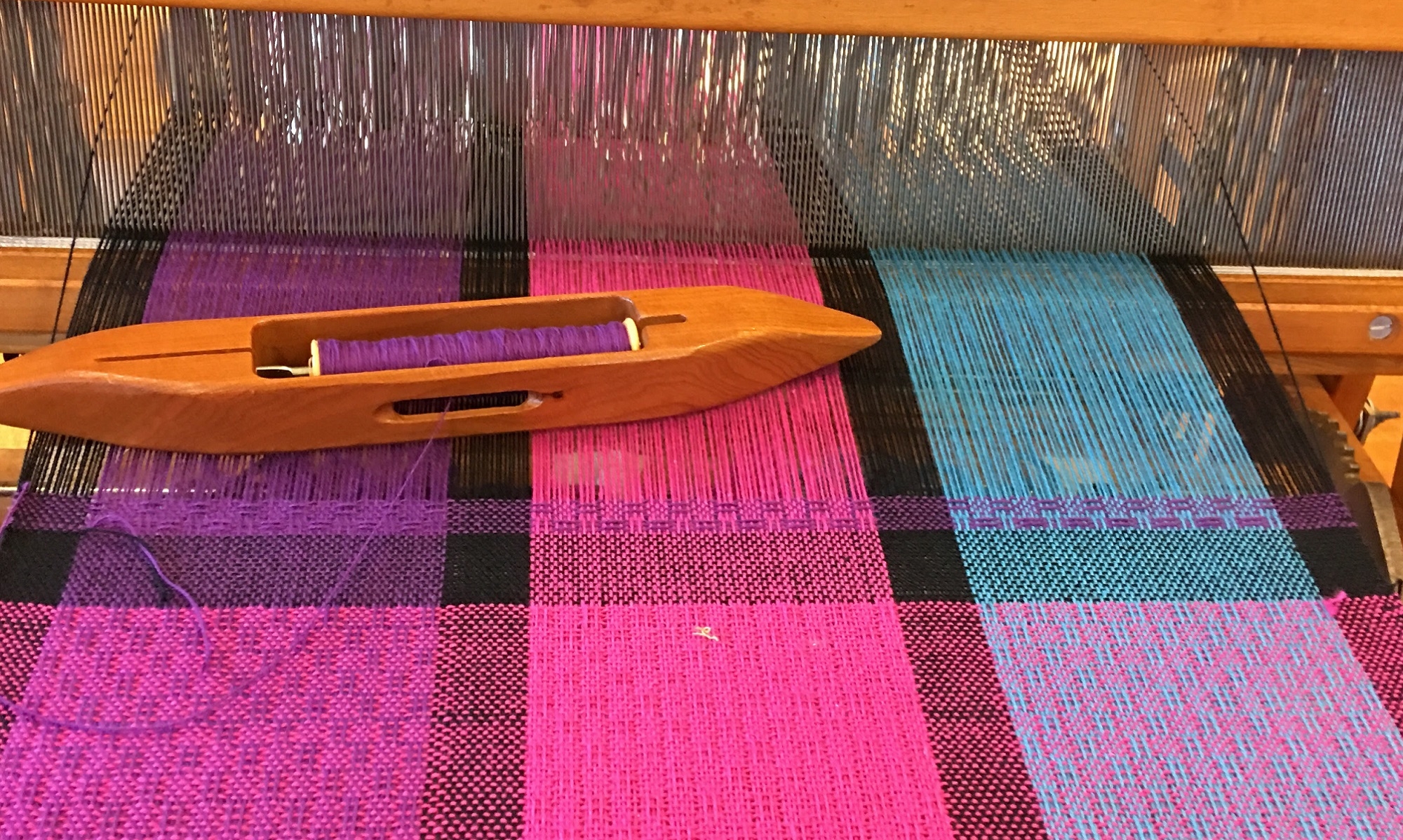I’m taking a workshop on creating a mixed warp at the Weavers Guild of Greater Cincinnati. Today in the first 4 hours of the workshop, we learned a little about color theory and value. Colors may be different but have the same value on the grayscale. In our first group exercise we sorted yarns by value. Here is how they sorted out.

Here is the sorted yarn viewed as a grayscale image.

Sometimes they can really fool you. Yellows and yarns that have some variegation or sparkle can be very difficult to sort. One of the theories of choosing the yarns is they can be any different colors but will look good together as long as they are about the same value.
Then you have to consider your fiber types, and textures of yarn and decide what will fibers will do taking into consideration how they will stretch in the warp and shrink in the finishing. We learned about the properties of different fibers such as wool, acrylic, silk, cotton and flax and how to decide how well they will mix together.
Then you choose something that will add a little “pop” of color or sparkle in the warp or to be used as a supplementary warp.
In my first go through in selecting 5 to 7 yarns from what I had to choose from, this is what I came up with and here is how they came out on the grayscale.
And here is what they look like in color.

Its hard to see in a picture, but one of my yarns (the grayish one) had a little bit of silver sparkle to it.
After choosing some possibilities, we learned how to figure out the sett (how close together they should be) of yarns of different thicknesses, taking into consideration the percentage of each we will be using, the structure we will weave and the weft we are going to use. That part can be very tricky.
Tomorrow in an all day session we will lean different approaches to winding the warp and dressing the loom with a mixed warp. It should be a great day!




















